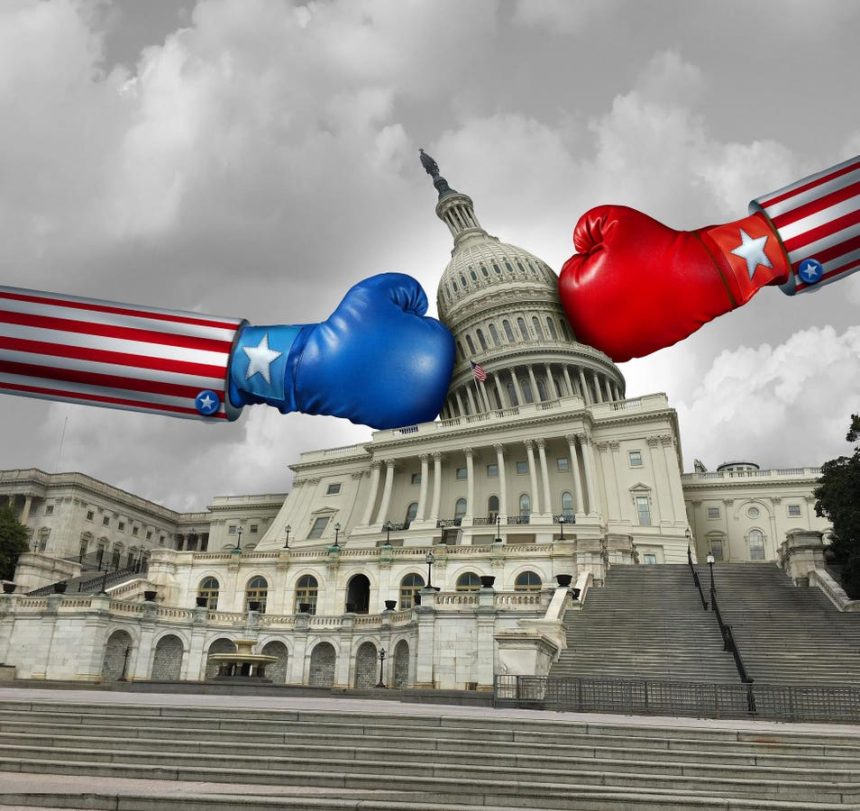Most understand that the federal government spends much more than it collects. If this overspending continues, at some point, America will likely face bankruptcy. Exactly when is hard to say, but it will happen unless Congress gets a handle on its excessive spending.
U.S. Financial Solvency
Last summer the U.S. credit rating was downgraded by Fitch from AAA to AA+. This underscores the disfunction in Washington as Congressional members use the power of the purse to remain in office. This power includes financial promises to constituents and the self-enrichment program whereby members of Congress amass wealth at the expense of the American taxpayer. Corruption in Congress is well documented and includes both Democrats and Republicans.
Will the U.S. go bankrupt and if so, when? As long as the U.S. economy is strong, tax receipts should follow suit and the deficit may not worsen. However, as the federal government continues to spend more than it collects, there will be a need to raise taxes and increase borrowing. At some point, either when the economy hits a recession or we experience some major financial event, there may not be enough revenue to sustain all government operations. This would create a need for more revenue (i.e. higher taxes) and a substantial increase in borrowing, plus future credit downgrades. A lower credit rating would mean that the U.S. would have to pay a higher rate of interest on borrowed funds. In the meantime, we continue to rob Peter to pay Paul.
Federal Government Overspending
The following chart illustrates the average annual increase over the past 58 years for federal government receipts, outlays, the national debt, inflation, and the U.S. labor force. For example, the amount of revenue the federal government collects has increased by 6.47% per year since 1966. Federal government expenses, on the other hand, have risen by 7.05% per year. Thus, federal spending has outpaced revenue by an average of more than 0.50% per year. This has led to an average annual increase in the national debt of 8.37% per year. When you compare the increase in the national debt to inflation (CPI), the national debt has risen twice as fast, 8.37% to 4.00% per year.
It’s also noteworthy that the U.S. labor force has grown by a mere 1.37% per year since 1966. There are several reasons for the small increase including improved productivity, which is expected to do even better as artificial intelligence becomes more dominant.
Federal Government Revenue and Spending-A More Detailed Look
As mentioned above, the federal government spends much more than it collects. Government spending usually increases during wartime and other unforeseen emergencies. As an example, the following chart reveals how the federal government spent more during two recent crises. The first is the 2008 financial crisis and the second is the Covid-19 pandemic. When the financial crisis hit federal spending increased and revenue declined. This created the largest budget shortfalls in American history at that time. Moreover, it took five years for federal revenue to exceed the pre-crisis level. Even after the crisis spending continued to trend higher.
During Covid-19 federal spending exploded. Revenue did fall in the fiscal year ending 9/30/2021. Fortunately, revenue was only down for one year. Unfortunately, spending rose at a much faster rate than revenue.
The budget shortfall exceeded $1.4 trillion in the fiscal year ending 9/30/2009 during the financial crisis. During Covid-19, the budget shortfall exploded to more than $3.13 trillion in the fiscal year ending 9/30/2020. Since then, the shortfalls have been between $1.37 trillion and $2.77 trillion. In short, America cannot sustain this level of overspending indefinitely.
The National Debt
Currently, the national debt is more than $34.5 trillion. This equates to about $102,562 per citizen. Only twenty years ago, our national debt was $5.6 trillion or about $19,760 per citizen. When you compare the current national debt to U.S. GDP the ratio is over 123%. In 1980 the ratio was a mere 35.54%. Twenty years later, in 2000, it was 54.80%. By 2020, it was substantially higher at 121.31%. Today’s ratio of 123% is expected to reach well above 150% by 2028. Think of GDP as your income, which provides insight into your ability to repay your debt.
As federal spending continues to outstrip revenue, historically large budget shortfalls will continue, and it will become increasingly difficult for Washington to meet the needs of Americans. This will raise the frustration level of millions of Americans and likely lead to an increase in civil unrest. Unless Congress begins to curtail its spending and until its members start acting with fiscal integrity, the next crisis – whenever it may come, could be problematic. At best, the next crisis will cause the national debt to rise even faster.
Read the full article here
















